| Listing 1 - 10 of 82 | << page >> |
Sort by
|
Book
ISBN: 9780199660285 9780198783251 019966028X Year: 2014 Publisher: Oxford : Oxford University Press,
Abstract | Keywords | Export | Availability | Bookmark
 Loading...
Loading...Choose an application
- Reference Manager
- EndNote
- RefWorks (Direct export to RefWorks)
The Birth of the New Justice' is a history of the attempts to instate ad hoc and permanent international criminal courts and new international criminal laws from the end of World War I to the beginning of the Cold War. The purpose of these courts was to repress aggressive war, war crimes, terrorism, and genocide. 00Rather than arguing that these legal projects were attempts by state governments to project a "liberal legalism" and create an international state system that limited sovereignty, Mark Lewis shows that European jurists in a variety of transnational organizations derived their motives from a range of ideological motives - liberal, conservative, utopian, humanitarian, nationalist, and particularist. European jurists at the Paris Peace Conference in 1919 created a controversial new philosophy of prosecution and punishment, and during the following decades, jurists in different organizations, including the International Law Association, International Association for Criminal Law, the World Jewish Congress, and the International Committee of the Red Cross, transformed the ideas of the legitimacy of post-war trials and the concept of international crime to deal with myriad social and political problems.
War crimes --- War (International law) --- Criminal courts --- Courts, Criminal --- Hostilities --- History --- History. --- Convention pour la prévention et la répression du crime de génocide (1948) --- Congrès juif mondial --- Comité international de la Croix-Rouge --- Congrès juif mondial. --- Comité international de la Croix-Rouge. --- Société des Nations. --- Correctional institutions --- Courts --- Criminal justice, Administration of --- Criminal procedure --- International law --- Neutrality --- Droit international pénal --- Tribunaux criminels internationaux --- Crimes contre l'humanité --- Terrorisme --- International criminal law --- International criminal courts --- International crimes --- Lutte contre --- Crimes de guerre --- Guerre (Droit international) --- Tribunaux criminels --- Histoire --- War crimes - History - 20th century --- Droit international pénal --- Crimes contre l'humanité --- Congrès juif mondial. --- Comité international de la Croix-Rouge. --- Société des Nations.
Book
ISBN: 9781846382130 Year: 2021 Publisher: London Afterall Books
Abstract | Keywords | Export | Availability | Bookmark
 Loading...
Loading...Choose an application
- Reference Manager
- EndNote
- RefWorks (Direct export to RefWorks)
Pierre Huyghe's 19-minute film Untitled (Human Mask) opens with drone shots of a Japanese town, wracked by a well-known triple devastation of earthquake, tsunami, nuclear plant meltdown. The context is specific, yet curiously expansive – an atmosphere for troubled times. Are we witnessing the end of the Capitalocene? The emergence of an environmental uncanny? No one remains to guide us but a cat, a cockroach, some larvae and a monkey in a human mask. With infinite curiosity, filmmaker Mark Lewis, Huyghe's contemporary, gives us a tour through the experience – the pleasures and frustrations – of Untitled (Human Mask). Weaving close reading, free association, history, philosophy and theory, Lewis thinks along with this captivating film to explore questions of creativity, time, apocalypse and humanity. If the apocalypse itself is a revelation of disclosure of great knowledge, the book is an attempt to draw knowledge from that moment's chaotic aesthetics. the result is an essay as alive to racial politics, digital culture and the fragility of ownerships as it is embedded in a history of cinema, painting and the moving image. Huyghe's mesmerising poetics, Lewis argues, remind us both of human history's radical transformations, and the ongoing possibility of imagining other worlds.
Art --- Film --- apocalyptic art --- video art --- motion pictures [visual works] --- disasters --- philosophy of art --- digital art [visual works] --- multimedia artists --- social criticism --- Huyghe, Pierre --- Japan
Book
ISBN: 9780674033061 067403306X Year: 2009 Publisher: Cambridge: Harvard university press,
Abstract | Keywords | Export | Availability | Bookmark
 Loading...
Loading...Choose an application
- Reference Manager
- EndNote
- RefWorks (Direct export to RefWorks)
History of Asia --- Tang [Dynasty] --- anno 700-799 --- anno 800-899 --- anno 600-699 --- China --- Chine --- History --- Histoire --- S04/0630 --- China: History--Sui and Tang: 589 - 907
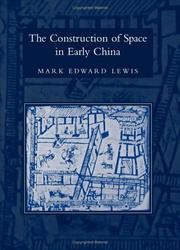
ISBN: 0791466078 0791466086 9780791466070 0791482499 1423747925 9781423747925 9780791482490 9780791466087 Year: 2006 Publisher: Albany, N.Y. : State University of New York Press,
Abstract | Keywords | Export | Availability | Bookmark
 Loading...
Loading...Choose an application
- Reference Manager
- EndNote
- RefWorks (Direct export to RefWorks)
This book examines the formation of the Chinese empire through its reorganization and reinterpretation of its basic spatial units: the human body, the household, the city, the region, and the world. The central theme of the book is the way all these forms of ordered space were reshaped by the project of unification and how, at the same time, that unification was constrained and limited by the necessary survival of the units on which it was based. Consequently, as Mark Edward Lewis shows, each level of spatial organization could achieve order and meaning only within an encompassing, superior whole: the body within the household, the household within the lineage and state, the city within the region, and the region within the world empire, while each level still contained within itself the smaller units from which it was formed. The unity that was the empire's highest goal avoided collapse back into the original chaos of nondistinction only by preserving within itself the very divisions on the basis of family or region that it claimed to transcend.
History of Asia --- China --- Philosophy, Chinese --- Social groups --- Philosophie chinoise --- Groupes sociaux --- S12/0216 --- S12/0222 --- China: Philosophy and Classics--Political philosophy --- China: Philosophy and Classics--Chinese philosophy: Ancient --- Association --- Group dynamics --- Groups, Social --- Associations, institutions, etc. --- Social participation
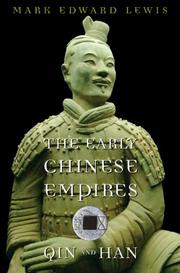
ISBN: 9780674057340 0674057341 9780674024779 067402477X 0674040147 0674265424 Year: 2010 Publisher: Cambridge: Harvard university press,
Abstract | Keywords | Export | Availability | Bookmark
 Loading...
Loading...Choose an application
- Reference Manager
- EndNote
- RefWorks (Direct export to RefWorks)
In 221 B.C. the First Emperor of Qin unified what would become the heart of a Chinese empire whose major features would endure for two millennia. In the first of a six-volume series on the history of imperial China, Lewis highlights the key challenges facing the court officials and scholars who set about governing an empire of such scale and diversity.
China --- History --- History. --- anno 100-199 --- anno 1-99 --- S04/0500 --- S04/0520 --- S06/0202 --- China: History--Ancient (Pre-Han and Han, incl. Sima Qian) --- China: History--Han: 206 B.C. - 220 A.D. --- China: Politics and government--Government and political institutions: Han - 589 --- Ancient history --- History of Asia --- Chine --- Histoire --- China: History--Han: 206 B.C. - 220 A.D --- China - History - Qin dynasty, 221-207 B.C. --- China - History - Han dynasty, 202 B.C.-220 A.D.
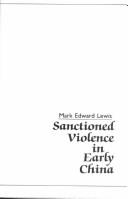
ISBN: 9780791400777 9780791400760 0791400778 079140076X Year: 1990 Publisher: Albany : State University of New York Press,
Abstract | Keywords | Export | Availability | Bookmark
 Loading...
Loading...Choose an application
- Reference Manager
- EndNote
- RefWorks (Direct export to RefWorks)
Violence --- History. --- Histoire --- China --- Chine --- Social conditions --- History --- Conditions sociales --- S06/0200 --- S04/0510 --- S07/0200 --- S11/0491 --- China: Politics and government--Government and political institutions: general and before 1911 --- China: History--Pre-Han: before 206 B.C. --- China: Army and police force--Military history --- China: Social sciences--Society before 1840 --- Violent behavior --- Social psychology --- China: History--Pre-Han: before 206 B.C
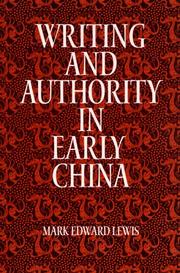
ISBN: 0791441148 079144113X 9780791441145 Year: 1999 Publisher: [Albany]: State university of New York press,
Abstract | Keywords | Export | Availability | Bookmark
 Loading...
Loading...Choose an application
- Reference Manager
- EndNote
- RefWorks (Direct export to RefWorks)
Chinese literature --- History and criticism --- Theory, etc. --- Political aspects. --- S16/0150 --- S02/0210 --- S04/0200 --- China: Literature and theatrical art--General works --- China: General works--Intellectuals: general and before 1840 --- China: History--Historiography and theory of history --- Littérature chinoise --- Histoire et critique --- Aspect politique --- Political aspects --- History and criticism&delete& --- Theory, etc --- Chinese literature - To 221 B.C. - History and criticism - Theory, etc. --- Chinese literature - Political aspects.
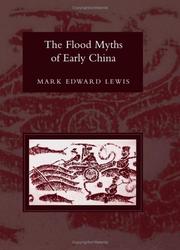
ISBN: 0791466639 9780791466636 Year: 2006 Publisher: Albany: State university of New York press,
Abstract | Keywords | Export | Availability | Bookmark
 Loading...
Loading...Choose an application
- Reference Manager
- EndNote
- RefWorks (Direct export to RefWorks)
Floods --- Religious aspects --- Religious aspects. --- S13A/0402 --- S16/0195 --- China: Religion--Mythology (incl. pantheon, ghosts, myths and legends) --- China: Literature and theatrical art--Thematic studies --- Inondation --- Folklore. --- Folklore --- Aspect religieux --- Flooding --- Inundations --- Natural disasters --- Water --- Floods - China - Folklore --- Floods - China - Religious aspects
Book
ISBN: 9780674026056 0674026055 0674040155 0674060350 0674265408 Year: 2009 Publisher: Cambridge: Harvard university press,
Abstract | Keywords | Export | Availability | Bookmark
 Loading...
Loading...Choose an application
- Reference Manager
- EndNote
- RefWorks (Direct export to RefWorks)
After the collapse of the Han dynasty in the third century CE, China divided along a north-south line. This book traces the changes that both underlay and resulted from this split in a period that saw the geographic redefinition of China, more engagement with the outside world, significant changes to family life, developments in the literary and social arenas, and the introduction of new religions.
China --- History --- History of Asia --- Antiquity --- S04/0620 --- China: History--Period of Disunity: 280 - 589 --- Chine --- Histoire --- China - History - 220-589

ISBN: 0791482227 1423766199 9781423766193 0791466639 9780791466636 9780791482223 Year: 2006 Publisher: Albany State University of New York Press
Abstract | Keywords | Export | Availability | Bookmark
 Loading...
Loading...Choose an application
- Reference Manager
- EndNote
- RefWorks (Direct export to RefWorks)
Early Chinese ideas about the construction of an ordered human space received narrative form in a set of stories dealing with the rescue of the world and its inhabitants from a universal flood. This book demonstrates how early Chinese stories of the re-creation of the world from a watery chaos provided principles underlying such fundamental units as the state, lineage, the married couple, and even the human body. These myths also supplied a charter for the major political and social institutions of Warring States (481–221 BC) and early imperial (220 BC–AD 220) China.In some versions of the tales, the flood was triggered by rebellion, while other versions linked the taming of the flood with the creation of the institution of a lineage, and still others linked the taming to the process in which the divided principles of the masculine and the feminine were joined in the married couple to produce an ordered household. While availing themselves of earlier stories and of central religious rituals of the period, these myths transformed earlier divinities or animal spirits into rulers or ministers and provided both etiologies and legitimation for the emerging political and social institutions that culminated in the creation of a unitary empire.
Floods --- Flooding --- Inundations --- Natural disasters --- Water --- Religious aspects.
| Listing 1 - 10 of 82 | << page >> |
Sort by
|

 Search
Search Feedback
Feedback About UniCat
About UniCat  Help
Help News
News